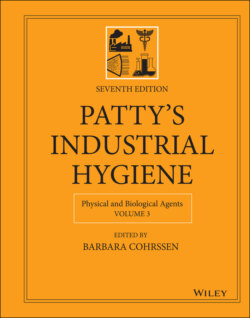Читать книгу Patty's Industrial Hygiene, Physical and Biological Agents - Группа авторов - Страница 21
3.3 Rate of Decay
ОглавлениеThe half‐life is defined as the period of time during which one‐half of the radioisotope decays. After a second half‐life period, one‐half of the remaining isotope decays, leaving one‐fourth of the original activity, and after the next half‐life, only one‐eighth of the original activity is left. More than 99% of the original activity is gone after seven half‐lives. Half‐lives of radioisotopes range from microseconds to billions of years.
The decay rate constant is defined as the instantaneous fractional decrease of the radioisotope. In the case of 226Ra, whose half‐life is 1600 years, the decay rate constant is 0.00043 per year. This means that it is decreasing at a rate of 0.043% per year. Radioisotopes with a short half‐life decay at a much faster rate. For example, 131I, with a half‐life of eight days, decays at a rate of 8.7% per day. Generally, the relationship between an initial amount of activity, A0, and the amount of activity left after a time t, and whose decay rate constant is λ per unit time, is given by
(1)
The half‐life, T1/2, is related to the decay rate constant by
The half‐time, T1/2, and the decay constant, λ, must be in the same time units when calculating with these decay equations.
